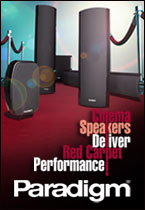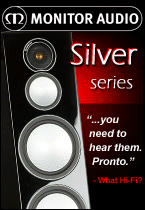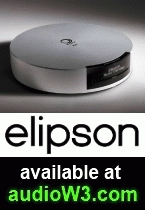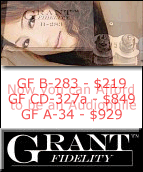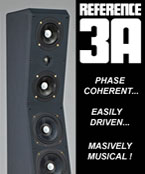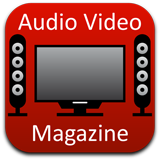
So you read the Toronto HiFi magazine and from time to time you come across a term which you don’t have a clear understanding of. Perhaps you don’t understand it at all. Chances are, you’re not the only one. When it comes to HiFi and Home Theater equipment, we talk about very specific things that you won’t read about just anywhere. And they certainly won’t come up at the dinner table. This article, or more appropriately glossary, is the first in a series that will help you understand what all the different Home Theater terms mean. Below you’ll find much of the terminology that we frequently use when we talk about speakers. Once this issue disappears from the stores, you can continue using this glossary as a reference from the Toronto HiFi website. We’ve arranged the list in such a way that reads easily, with related terms collected together.
Understanding Speaker Specs
The frequencies within the range of human hearing are 20 Hz - 20 kHz.
Decibel (dB) - One-tenth of a Bel. Named in part after Alexander Graham Bell (hence the capital B), the decibel is used in both audio and video applications (although more often the latter) to compare power differences in voltage, current, watts, sound pressure levels (SPL), etc. The number of Bels is the common logarithm of the ratio of two powers. If two powers differ by 1 Bel, the greater one will be 10 times the other. A 100-watt amplifier is 1 Bel, or 10 dB, higher in output than a 10-watt unit. Decibels are ratios, not fixed quantities. The logarithmic nature of the decibel scale corresponds to the logarithmic nature of human hearing. One dB SPL is commonly accepted as the smallest difference that people can hear, depending on the bandwidth of the manipulated signal. When measuring audio signal-to-noise ratios, the difference between the quietest and loudest sounds is stated in dB.
Efficiency Rating - The loudspeaker parameter that shows the level of sound output when measured at a prescribed distance with a standard amount of energy fed into the speaker. Efficiency rating standard is 1 watt at 1 meter and is measured in decibels.
Frequency Response - Refers to what frequencies can be reproduced and how accurately they are reproduced.
20 Hz - 40 Hz - Low Bass
40 Hz - 80 Hz - Mid Bass
80 Hz -160 Hz - Upper Bass
160 Hz - 320 Hz - Lower Midrange
320 Hz - 640 Hz - Midrange
640 Hz - 1.28 kHz - Upper Midrange
1.28 kHz - 2.56 kHz - Lower Treble
2.56 kHz - 5.12 kHz - Mid Treble
5.12 kHz - 10.2 kHz - Upper Treble
10.2 kHz - 20.4 kHz - Top Octave
Impedance - Impedance ratings are included to offer an idea of how difficult a load the speakers are as far as the amp is concerned. Plugging a 4 ohm speaker into an amp rated at 8 ohms and above will damage the speaker and/or amp at louder levels, as it cannot handle the current demands of the lower impedance speaker. That being said, some ampsare perfectly capable of driving a 4 ohm speaker and will infact sound better when driving lower impedance speakers.
Input Impedance - The “load” actually seen by a source connected to an input. In audio, the input impedance should be considerably larger than the connected component’s output impedance to avoid signal losses and frequency-response irregularities. In video, the input and output impedance should nearly match.
Magnetic Shielding - Magnetically shielded speakers are important in Home Theater applications because of the damage the magnetic field of a speaker can do to a television set. This feature is critical for the centre channel and front left/right speakers.
Output Impedance - The impedance seen by an electrical load attached to the output terminals of an audio or video device. For practical purposes, the output impedance of any audio amplifying equipment should be low in comparison to what it is connected to. It should not only be low at low frequencies, where it will affect bass damping, but should also be low at higher frequencies to insure a flat frequency response. In video systems, output and input impedances should closely match.
Ohm - A measure of how much something resists (impedes) the flow of electricity.
Sensitivity/Efficiency Rating - The loudspeaker parameter that shows the level of sound output when measured at a prescribed distance with a standard amount of energy fed into the speaker. Efficiency rating standard is 1 watt at 1 meter and is measured in decibels. Efficiency rating dictates how loud a speaker will play for a given amount of power.
SPL - Sound-pressure level, measured in dB. More equals louder.
Watt - A unit of power or energy. One horsepower is equal to 745.7 watts. Amplifiers do not deliver watts (they deliver voltage), nor do speakers create them. When presented to a specific load (speaker impedance), current flows and the power dissipated is rated in watts. Wattage produced may be calculated by multiplying voltage times current or by squaring the voltage and dividing it by the impedance.
Speaker Components/Crossovers
Active Crossover - A powered electronic network that divides up the frequency constituents of an audio signal (bass, midrange, and treble) before it is amplified and sent to the various drivers in a speaker system. While active crossovers are often contained within subwoofer enclosures along with the bass driver(s), those that work with multi-way systems may also be outboard mounted.
Binding Post - The termination point of an amplifier or loudspeaker where the speaker cable is connected.
Crossover - A component that divides an audio signal into two or more parts by frequency, sending, for example, low frequencies to one output and high frequencies to another. Crossovers are sometimes built into amplifiers or equalizers.
Damping Material - Any material added to the interior of a speaker enclosure to absorb unwanted sound and reduce the out-of-phase reflection to the driver diaphragm.
Diaphragm - The part of a dynamic loudspeaker, attached to the voice coil, that produces sound. It usually has the shape of a cone or dome.
Ferro Fluid- This substance is a magnetically attracted liquid that works well at cooling tweeter and midrange driver voice coils. This is because it stays suspended in the magnetic gaps between the coil and the heavy magnet assembly, conducting heat to the latter. It also can affect speaker damping. In some tweeter designs, silicone grease will work better than Ferro fluid.
LFE (Low Frequency Effects) - LFE refers to bass. You really need a powered subwoofer to truly enjoy the LFEs on many Dolby Digital and DTS DVDS. The signal generally ranges between 20-150Hz.
Passive Crossover - A non-powered electrical network that divides the frequency constituents of an audio signal (bass, midrange, and treble) after it has been amplified and then routes them to the various drivers in a speaker system. In most situations, it is enclosed within the same box as the speaker drivers.
Tweeter - A speaker designed to reproduce the high or treble range of the sound spectrum. Usually made of a rigid material (although there are soft dome tweeters).
Woofer - The individual speaker unit (driver) designed to handle the midrange and low frequency bass range. Some speaker enclosures contain multiple woofer drivers to increase bass power. The cones can be made of paper, plastic, kevlar, carbon fibre and even aluminum.
Voice Coil - The wire coil surrounded by the magnet assembly in a moving-coil, dynamic loudspeaker. The coil is attached to a diaphragm (which may be a cone, dome, or some kind of hybrid air mover) of the driver and causes it to move when excited by a signal from an amplifier. Most voice coils are made from copper wire, although a few are made of aluminum wire.
Amplifiers/Enclosures
AMP - Ampere. A measurement of electrical current. This term is also sometimes used as an abbreviation for amplifier.
Amplifier - A component that increases the level of an audio signal from line level to speaker level.
Band-Pass Enclosure - Type of enclosure used for subwoofers where the driver is completely inside the enclosure and all of the output emerges through a port(s). This configuration is usually designed for high output volume with importance of accuracy/fidelity being less emphasized.
Bass Reflex - A speaker-box design that makes use of a port or drone cone. According to parameters outlined by Thiele and Small more than twenty years ago, allows the rear radiation of a woofer cone to reinforce the output of the front, extending and smoothing low-range response. At frequencies below the reinforcement range, there will be a sharp cutoff as the port signal goes back out of phase with the front.
Biamping - Using separate amplifiers to power the crossover-separated drivers in a speaker system. When a powered subwoofer is added to a system, the latter automatically becomes biamped, with the satellites separately amplified from the subwoofer. With the right speakers, biamping can boost the output capabilities of a sound system considerably.
Bi-Wiring - Of or referring to a method of connecting the amplifier or receiver to the speaker in which separate wiring is run to the woofer and the tweeter, or in a three-way system, to the midrange driver.
MOSFET - Metal-Oxide-Semiconductor-Field-Effect Transistor. A special, high-peak-current output transistor used in some power amplifiers.
Speaker Channels
A channel is a seperate signal path. A 5.1 channel system means that it has 5 speakers (2 front, 1 center, 2 surround) plus a subwoofer.
Center Channel - The channel in a surround sound setup that is directly in front of the viewer. The center channel speaker “anchors” sound that should be coming from the front of the screen. Most dialogue in DVD movies is played through the center channel.
Front Speakers - speakers used for reproduction of majority of the sound in a home theater. The only speakers used in a stereo setup.
Rear Speakers - Used in 6.1 or 7.1 systems, where two additonal speakers are placed behind the listening position.
Subwoofer - A speaker driver designed to reproduce very low frequencies, usually those under about 100 Hz. Often larger than 6.5 inches in diameter.
Surround Speakers - The usually small speakers that are placed toward the sides or toward the rear in a surround-sound system and handle the decoded, extracted, or synthesized ambience signals.
Speaker Types
Bipole Speaker - Bipole speakers generally (there are always exceptions) use identical complements of speaker drivers located in the classic front of the box position as well as on the rear panel. The drivers are wired “in phase”. This means that since the drivers are fed the same signal, they are all doing essentially the same thing. Looking at the behavior of the woofers for example, when they are fed the positive portion of the signal (which moves them forward), both woofers are moving forward at the same time. The same goes with the midranges and tweeters. Since the drivers are back to back with each other, their relative movements actually have them moving in opposite directions. Even though the phase is the same, one woofer is pushing to the front, while the other woofer is pushing toward the rear. Theoretically, a bipolar speaker approaches a 360° soundfield - it radiates sound all around the room. That’s a good thing if you need to position your surround speakers behind your listening position. Some people prefer the greater localization of bipolar speakers when used in digital discrete (Dolby Digital 5.1, DTS) systems (see Figure 1 at top of page).
Dipole Speakers (and how they are different from Bipole Speakers) - Dipoles radiate sound from the front and back. In contrast to bipoles, the sound is propagated out of phase. The result is that there is a “null” or a dead zone of sound in the area along the 90 degree axis of the speaker (see Figure 2 at top of page). When properly set up, a pair of dipole speakers used as surround speakers will provide a very open, enveloping rear effects soundstage without allowing you to pinpoint the location of the speakers themselves. But for all this to work properly, the speakers need to be positioned “in-line” with the listening position as shown on the illustration below. If you are sitting out of the null area, the effect is ruined.
Monopole Speaker - A monopole speaker is the “classic” speaker design familiar to most people. The monopole is a box speaker with its complement of speaker drivers (most often cones and domes) usually located grouped together on one side (the face) of the box. Sound propagation is achieved as all drivers operate by moving air in the same direction.
Three-Way Speaker - A loudspeaker system that uses separate drivers for the high frequencies, midrange, and bass. Certain designs may have more than three speaker drivers, but because some are paired together to handle the same frequencies, they will still be three-way designs.
Two-Way Speaker - A speaker system that uses separate drivers for the high and low frequencies; the midrange frequencies are split between them. Two-way systems usually suffer from midrange dispersion problems, because the woofer, which must be robust enough to do decent work down low, is usually not small enough in diameter.
Speaker Wire/Connectors
Guage (speaker wire guage) - The thickness of a wire’s conductive copper bundle. The lower the gauge, the thicker the wire, and the better its capacity to pass the amplified audio signal. Speaker wires available on the market range from 12 to 16 guage. Thicker wires generally deliver cleaner sound and are a must for longer wire runs.
Bare wire - generally used to connect less expensive speakers and receivers. The wire sheilding is stripped away and inserted into a spring clip. It can also be used with a binding post.
Pin plug - thin, metal rods pushed into a binding post or spring connector. They provide the least surface area of all connection types.
Spade lug - flat, U-shaped pieces that fit around the bolt-like metal post in a binding post. Provides the most surface contact (along with the Banana plug).
Banana plug - made up of “wire strips” that compress as the banana plug is inserted into the binding post and then expand again inside the post to hold the banana plug inside. Provides the most surface contact (along with the Spade lug).
Click here to discuss this article on the CANADA HiFi Forum





